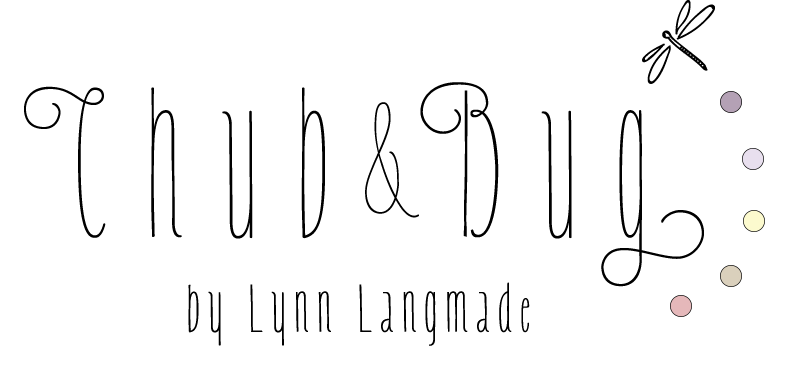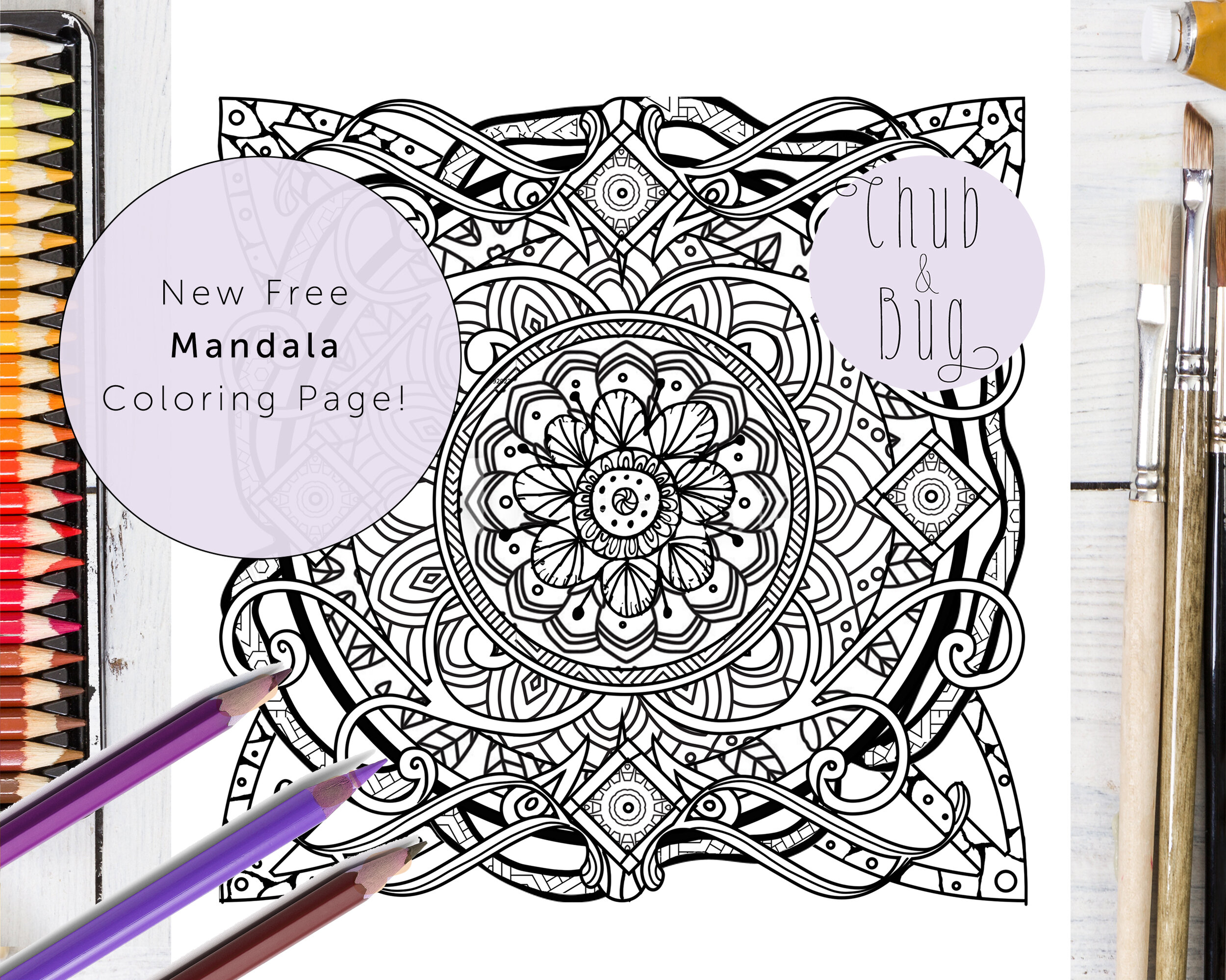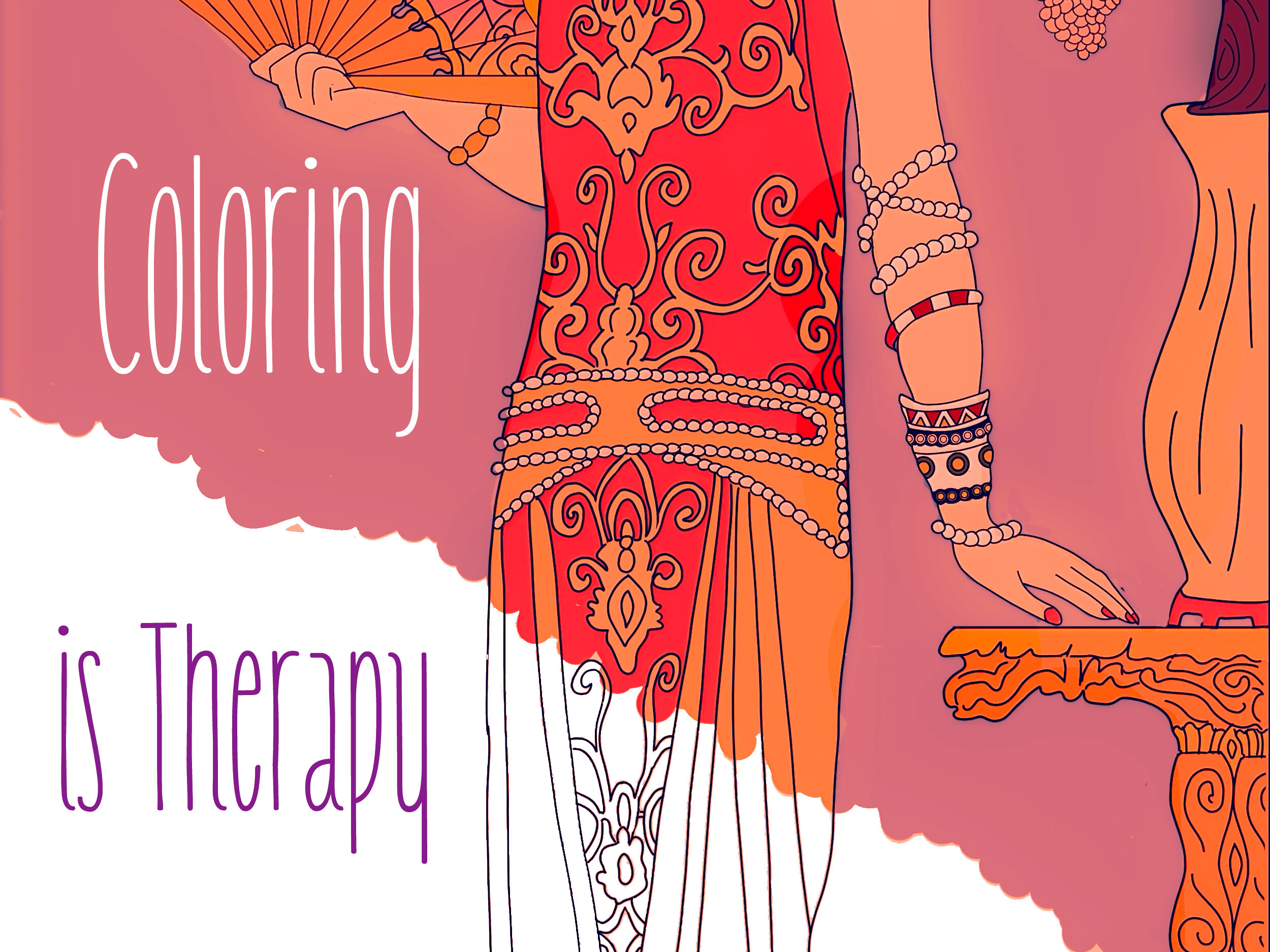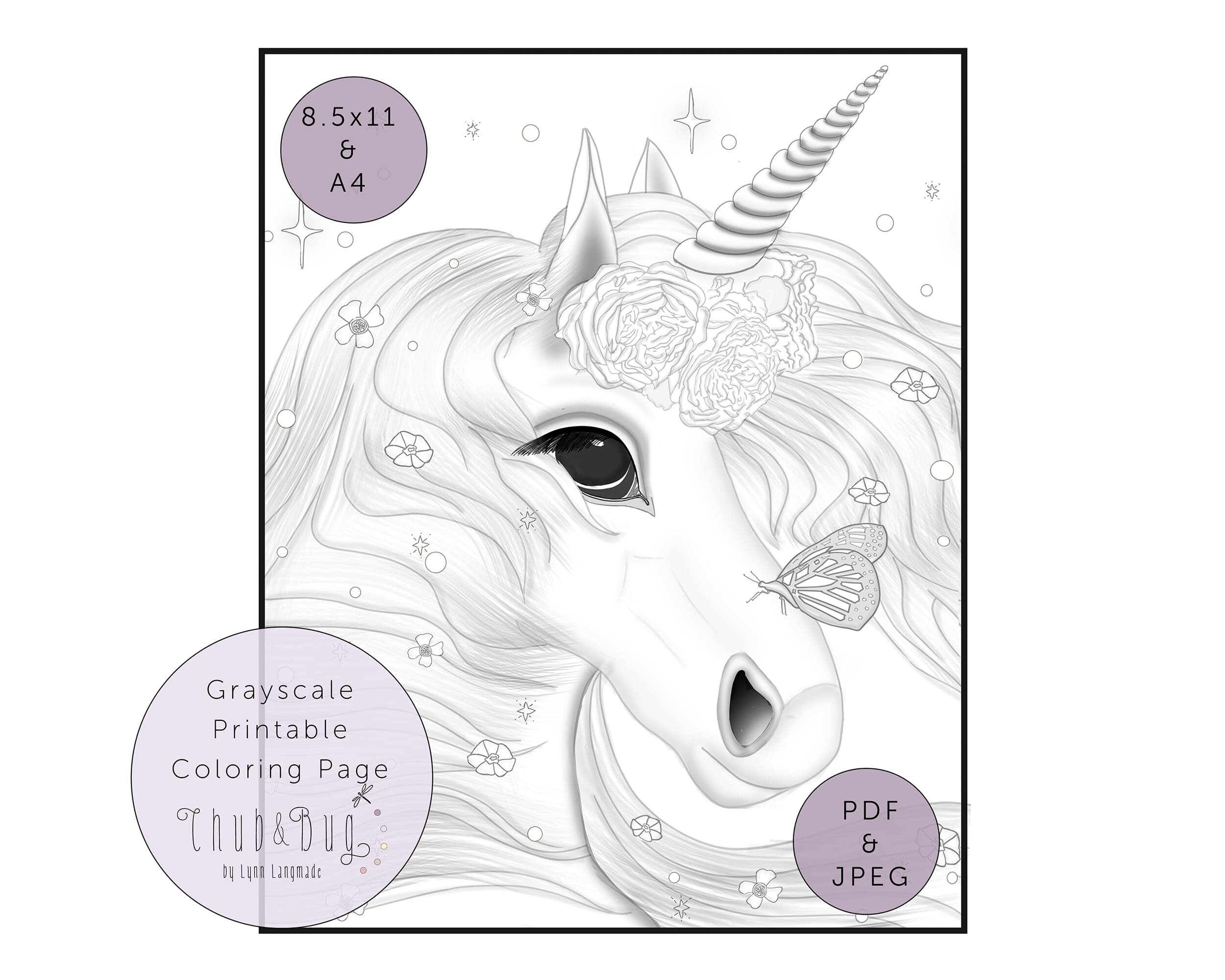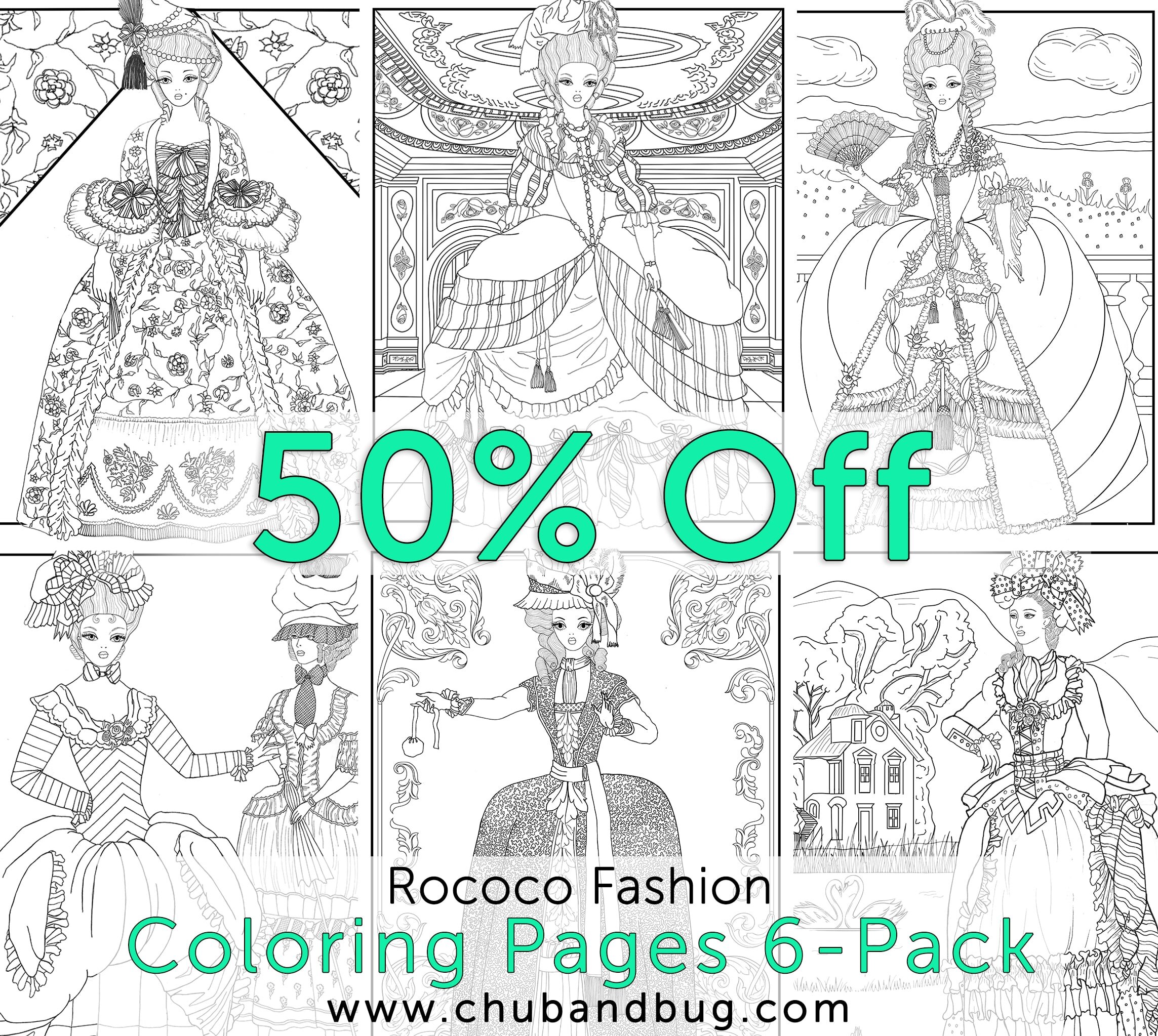The Amazing Benefits of Coloring for Adults
How Coloring Reduces Stress and Promotes Relaxation
“The arts are a critical component of healthcare. Expressive art is a tool to explore, develop and practice creativity as a means to wellness.”
“If you want to conquer the anxiety of life, live in the moment, live in the breath.”
Today is National Relaxation Day and what better way to celebrate the lost art of relaxation than to tout the benefits of coloring not only as a form of relaxation but indeed as a kind of “coloring therapy.” Coloring for adults can reduce both anxiety and stress. Some might argue that it’s actually a quiet form of meditation, helping you melt your worries away and even reaching a higher state of awareness and consciousness. That’s right, when adults color books, pages or even doodles, their health improves and they can even experience personal growth and development.
But what exactly are the benefits of coloring and how does coloring actually work to help us relax and detox? To understand the benefits of coloring, we need to grasp what stress is, what causes it, and the dangers it poses to our minds and bodies.
Stress is an everyday fact of life. You can’t avoid it. Stress is simply what happens when you’re forced to adapt to any change in your environment. While we commonly think of stress as a negative thing, stress encompasses a wide range of situations that compel us to adapt quickly. From physical danger to falling in love to achieving a goal we’ve worked hard for. Every day we’re confronted with experiences that can be potentially stressful. But not all stress is bad and in fact, stress is actually essential for survival.
In fact, there are about 4 basic ways we commonly encounter stress:
The environment—Our environment often forces us to adapt, such as in severe changes in the weather, traffic, or even pollution.
The social environment—Our social worlds place great demands on our time. Making sure we get to a meeting on time or meet a deadline on time can be extremely stress-inducing.
Our physiology—Our physiology must adapt in a myriad of ways, such as when we have poor nutrition, we’re going through a physiological change such as adolescence or menopause, or when we are sick or ill.
Our thoughts or thought processes—And last, but not least, our thoughts place the greatest pressure on us when reacting to the stressful situations life is putting us through. In other words, how we interpret and label our present experiences and those we predict for our future can serve to either relax us or increase our stress.
So while we can’t control the never ending stream of events that have the potential to be stressful in our everyday lives, we can control how we react to stressful situations. In fact, how you react is what determines the impact stress will have on your life. Most especially, how we “think” about our lives and what’s happening at any given moment—whether it leads to negative messaging and/or catastrophic thinking—causes our stress to spike and leads to the development of debilitating anxiety disorders that wreak havoc on our health, happiness, and general sense of well-being. A new study shows that repetitive negative thoughts themselves actually lead to cognitive decline and this isn’t surprising given that 80% of the 60,000 thoughts we have each day are negative. 80 percent!?!
And this is where adult coloring and coloring therapy come in. At root, coloring addresses the fourth yet likely greatest cause of stress: our thoughts and thinking processes. In short, coloring therapy works to stop and rechannel our thoughts so we can reduce stress and relax. Relaxation is inevitable when we change how we react to our own thoughts.
To grasp this, let’s think about how adult coloring or coloring therapy affects the brain.
Get Started Coloring Now
Start receiving the benefits of coloring in minutes!
How Does Coloring Affect the Brain?
Actually, the way coloring affects our brain is fascinating. To learn more, we can start by realizing the benefits of art therapy on the mind have been long established and coloring is itself a form of “art.” In fact, according to Eric Jensen, neuroscientist and author of Art with the Brain in Mind, Adult coloring has the ability to nourish all of the following systems in our bodies: sensory, attentional, cognitive, emotional and motor capacities.
But coloring has been clinically proven to reduce stress and anxiety in the mind. In a well-cited study from 2005, participants were asked to color either a “structured” mandala design or engage in free-form coloring for 20 minutes a day. The results confirmed not only that coloring in fact reduces stress, but that “structured” coloring is much more effective at reducing stress. A more recent study confirmed these findings in 2017, although it took 30 minutes to see clinically significant reduction in anxiety and stress.
But how exactly does coloring perform this miracle? First, coloring requires the brain’s two hemispheres to work together. It places demands on our left hemisphere when accessing logic and attention to detail to stay inside the lines, but it also places demands our right hemisphere, as when a colorist must select color, which is an intrinsically “creative” process. In this way, coloring actually reinforces the corpus callosum--the brain’s highway--connecting our two hemispheres, optimizing brain function.
But coloring also taps into the brain’s frontal cortex, which is responsible for executive functioning--that area of the brain responsible for organization, management, and focus. When beginning a coloring project, a colorist must strategize how the design or illustration will be colored. In short, before coloring can even begin, a colorist must organize the creative project into a series of succinct tasks and focus to complete it. Key decisions on open-ended outcomes, such as color, mood, and theme, must also be made, leading to an unpredictable result. Choosing those outcomes are inherently challenging, creative, and emancipatory.
However, it is precisely because coloring tasks are low stakes tasks with “predictable” outcomes, yet strategic enough to open up the brain’s creative pathways, that reduces stress. In other words, rather than bringing on stress, the act of coloring actually quiets the stressed-mind and induces a “meditative state.” In short, adult coloring is a form of unconscious meditation. It creates a form of mindfulness via a focus on small repetitive tasks and fullness in the present moment that inevitably leads to a calm mind. That’s right. Coloring actually serves to relax the fear center of the brain, the Amygdala, and replaces negative thoughts with positive ones. After even 20 minutes of coloring, your once stressed brain becomes capable of relaxing and is finally able to rest.
So if you’re feeling stressed out or are suffering from anxiety, you could spend thousands of dollars on cognitive behavior therapy, or spend months working through this best-selling Relaxation and Stress Workbook, or you could simply get a coloring book. It’s not only cheaper, but will als help you relax in minutes. Easy peasy.
Coloring is Therapy
The Benefits of Adult Coloring and Coloring Therapy
Here are just a few of the amazing benefits you can get from coloring:
Reduces stress and anxiety for all the reasons we discussed above, promoting a healthy mind
Helps you achieve “mindfulness” necessary for successful emotional and spiritual growth
Improves motor skills and vision so you can attain peak physical performance—especially for children
Improves sleep—when done before bedtime as a wind-down ritual, coloring is completely soporific or sleep-inducing as it forces us to “unplug” and reconnect with ourselves.
Enables unadulterated “play,” which improves your imagination by increasing synaptic connections
Allows you to reconnect with your “inner artist.” As children, we all spent hours coloring and drawing. But at some point in our lives, we were told to put “childish” things away and art and other creative activities left our lives. In contrast, adult coloring allows us to see that we’re all artists and to embrace the inner artists we all hold inside us.
Although not really a benefit, an extra bonus is that you can take coloring wherever you go. Whether you're traveling the world, on route to a business meeting, or on a deeply meditative hike, you can always bring a coloring book or coloring page and a pack of pens or pencils with you. That means that coloring is a therapeutic that you can depend on no matter what “stressful” situation life throws at you.
Best Coloring Techniques for Relaxation
Although there are many techniques to practice to achieve optimal relaxation during a coloring session, I’ve included the top 4 techniques here that will help you to see immediate results.
Choose “relaxing” colors for your coloring palette. To understand better how color impacts your mood, see our post on color associations. But the long and short of it is that there are warm colors and cool colors and cool colors tend to be soothing and calming. Some great examples of a relaxing color palette include blue, green and even pale pink. In the same way you might paint your bedroom a calming sky blue to help you relax and ease you into sleep, think about what color you want to “paint” your coloring book pages.
Select “structured” designs from coloring books and pages with intricate detail and/or complexity. The more detail your design has, the more your brain has to focus on the specific task you are accomplishing and the more likely you are to quiet your brain and thoughts and celebrate simply living in the moment--or in the breath as Amit Ray says. Again, it has been clinically proven that coloring a mandala for just 20 minutes a day reduces anxiety. Some of the best coloring pages that contain detail are abstract mandala coloring pages. Or simply try our FREE “Friendship” mandala coloring page. This printable page can be downloaded and printed within minutes for your enjoyment and more importantly: relaxation!
Choose designs that are more abstract or more fantastical. Why? Coloring both abstract designs or, in contrast, fantasy designs enables you to free your mind of demands or burdens your world or thoughts may be placing on you. When you color an abstract design, you can color it any way you like. There are no rules or restrictions and no “standard” or bar you have to meet, which might cause stress. Same with fantasy coloring pages. You don’t have to color the grass green. In the fantasy world you’re creating through coloring, you can create purple grass! As you splash the imaginary world of the coloring page with color, you’re recreating your world anew. It’s both emancipatory and relaxing at the same time. At Chub & Bug, we love designing fantasy coloring pages. Two of our favorites are our grayscale Fairy Queen portrait coloring page and our grayscale Unicorn portrait coloring page. Fantasy coloring pages help you to imagine, create, and play, which are the best things in the world to combat stress and increase relaxation.
Pick symmetrically-designed pages that allow you to engage in repetitive movements and repetitive color scaling, especially mandalas. Coloring symmetrical forms with repeating patterns helps to draw individuals into a meditative state. Does your coloring page have hundreds of tiny dots that need to each be filled in, repetitively, alternating red and blue? Say no more. As your hand and eye work through the repetitive color movement, filling in and adding color in a repetitive way, you’ll soon see the stress drain away as your thoughts shift to an almost meditative state.
So if you're new to adult coloring or simply thinking about taking up coloring as a hobby, you might be intimidated by very intricate coloring pages or designs. You might think those designs are for advanced colorists, not you, right? But stop that thought in its tracks. The more intricate and repetitive a design is, the more power it has to help you relax. And that’s really the whole point of coloring therapy isn’t it?
Join the Adult Coloring Community and Enjoy the Benefits of Coloring for Adults
Hopefully by now you’re starting to see all the amazing benefits of coloring for adults and how coloring itself is actually a form of therapy. But it’s more than therapy.
Did you know that adult coloring has a large and supportive community around the world? When you start coloring and develop as a “colorist,” you discover not only tons of other colorists who have developed all kinds of content to support you in your journey as a new colorist, but communities and groups dedicated to coloring, where colorists can meet and bond over a shared love of coloring. In fact, Chub and Bug aims to be just such a community as we regularly publish “How to” posts and videos as well as tips and tricks to help you up your coloring game.
More importantly, we regularly publish “Free” coloring pages and content for our coloring enthusiasts. I mentioned a few above. We often announce new free coloring materials in our newsletter, so if you’d like to keep up with all the latest cool coloring tips, techniques and freebies, why not subscribe to our newsletter. By joining our mailing list you also get 10% off everything :)
We’ve also included a few of our best coloring books and pages to get you started on your new coloring hobby:
Coloring Books:
The Roaring 20s: Paris and the Golden Age of Fashion—a full-length print coloring book with over 30 fashion illustrations for you to color. These designs and illustrations are intricate enough to help you achieve a true meditative state :)
Fashion Coloring 6-Packs:
Try our Rococo Fashion or our The Gibson Girl Look fashion black and white printable 6-packs. These 6-packs are perfect for beginning colorists who are just finding their feet and can’t handle 30 complex coloring pages found in a traditional coloring book..
Fantasy Grayscale Coloring Pages:
As we mentioned earlier, our Fairy Queen or Unicorn portrait coloring pages can be a great theme to choose from when trying to use coloring as a way to find meaningful relaxation.
We hope you’ve found this post helpful on National Relaxation Day, especially if you’re struggling with stress and anxiety and need to find healthy ways to relax.
And if you feel like we’ve missed a key benefit, we’d love to hear from you below. Leave a comment and let us know how coloring has enhanced your life and reduced your stress. Or add a benefit of coloring you think we may have missed!
